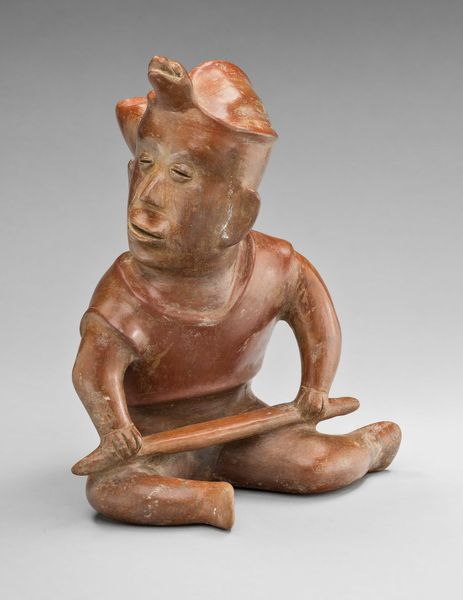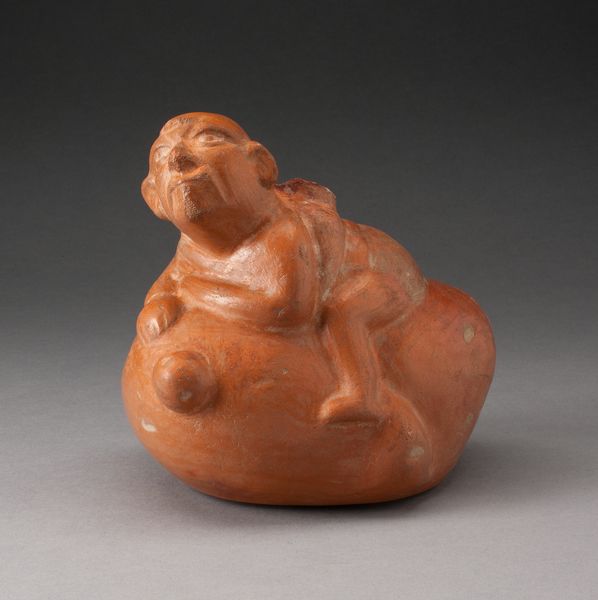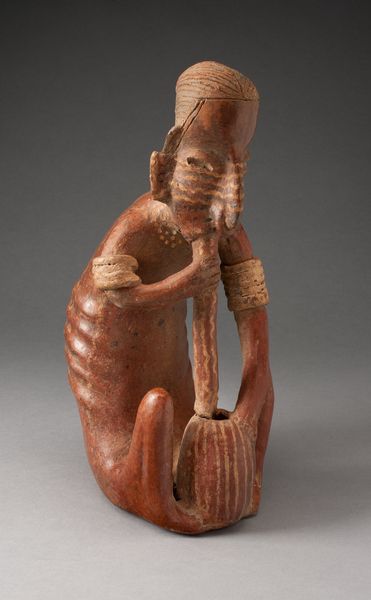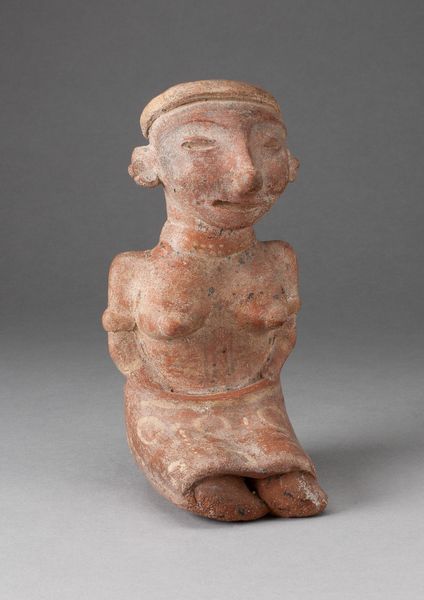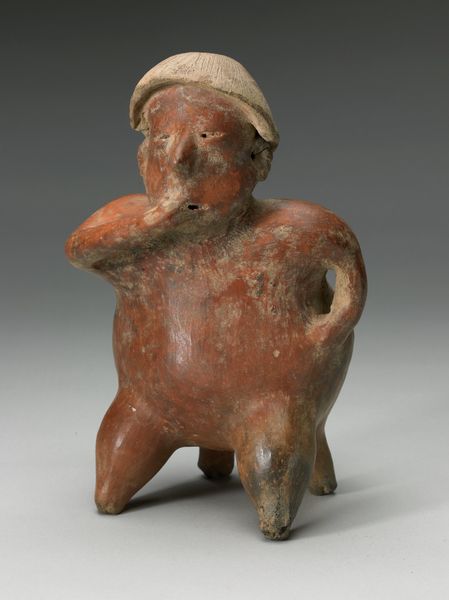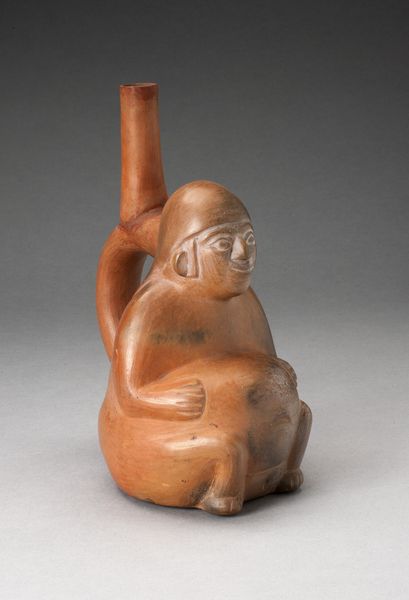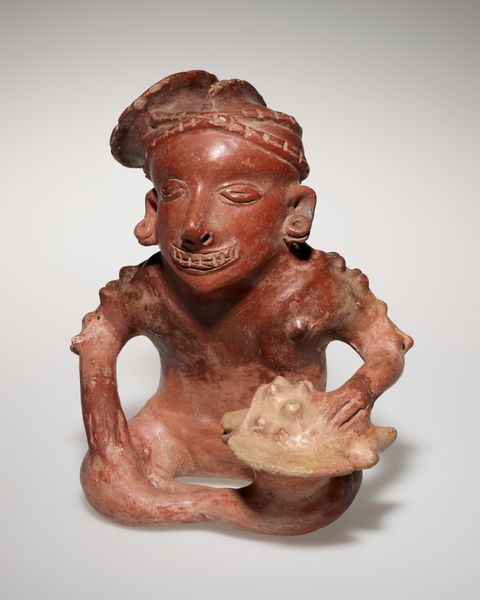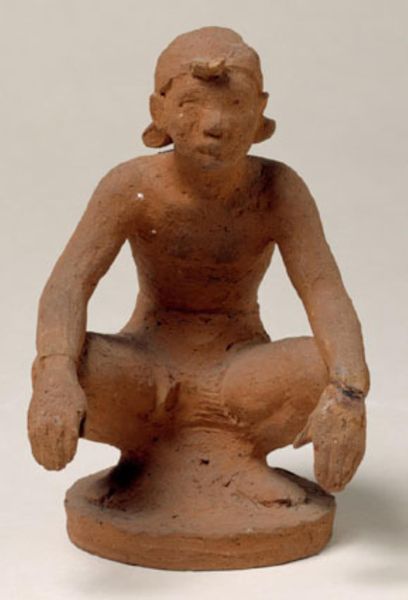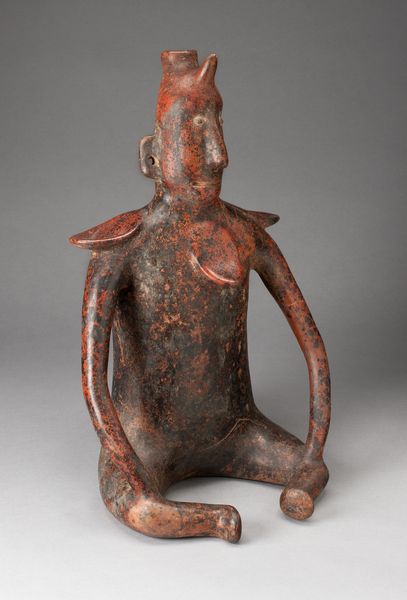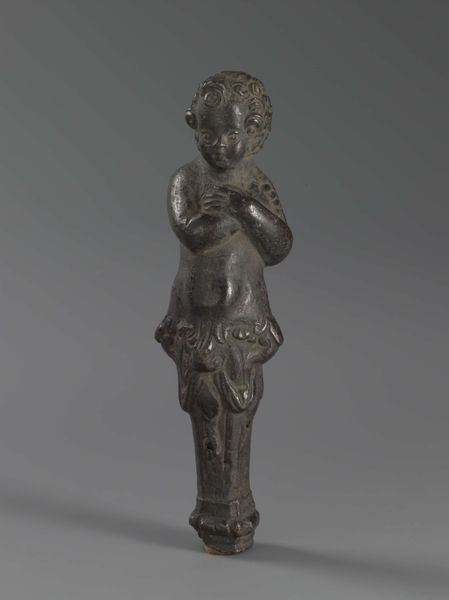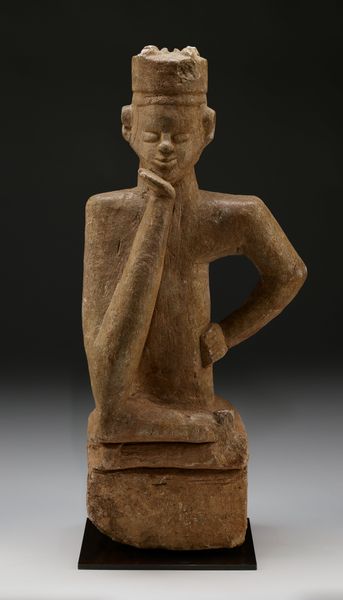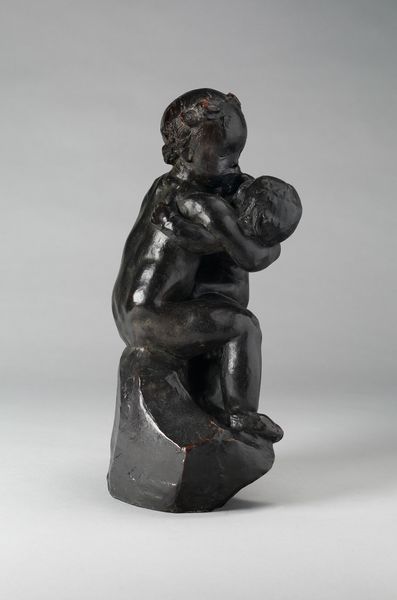
ceramic, sculpture, terracotta
#
ceramic
#
figuration
#
sculpture
#
terracotta
#
indigenous-americas
Dimensions: 12.8 × 24.1 × 18.4 cm (12 1/2 × 9 1/2 × 7 1/4 in.)
Copyright: Public Domain
Curator: Looking at this sculpture, "Vessel in the Form of a Seated Hunchback," created between 100-250 AD by the Colima people, a pre-Columbian society in present-day Mexico. What's your immediate take? Editor: I find it incredibly endearing. There's something about the smooth, reddish-brown ceramic and the figure’s posture that evokes a sense of vulnerability, almost childlike innocence despite the obvious physical hardship depicted. Curator: Exactly! The figure is intriguing; there is an anatomical exaggeration that strikes you. Consider how Colima ceramics, unlike much sculpture elsewhere at the time, tended away from glorifying the divine or powerful. This is just a normal person, wouldn't you say? Editor: I agree. I appreciate the candor with which it presents this individual’s form. The artist hasn't shied away from depicting the curvature of the spine. Yet, they are imbued with a peculiar nobility because the artist sees value in them worthy of being recorded forever. Curator: Note the way they used the material to soften those harder features and suggest humanity! The sleek surface almost begs for the hands. Plus, the vessel element transforms function in subtle ways beyond mere ornamentation. Editor: Indeed. You notice the spout emerging from the top of the head? That suggests that even something as quotidian as a vessel can be infused with dignity. Function, form, and meaning intertwine beautifully. There is a subtle geometry, but then softened to emphasize its life energy. Curator: Right. The very structure—the planes, angles—create dynamic tension in the artwork, and the reddish hue brings forth warmth, grounding this being that must've been real. He wasn't idealized. But instead given a voice outside conventional beauty in ceramic form Editor: A voice and presence in form. Seeing it prompts thoughts of ancient society, our treatment and assumptions about disabilities—and on whether our era can boast compassion like they seem to suggest, at all? In this humble statue I see both artistry and something about life's fleeting touch on all existence. Curator: And how pottery like this connected a world of lived experience to their beliefs, maybe suggesting ancestors themselves inhabited daily things... A humble thought. Thanks, let's go!
Comments
No comments
Be the first to comment and join the conversation on the ultimate creative platform.
